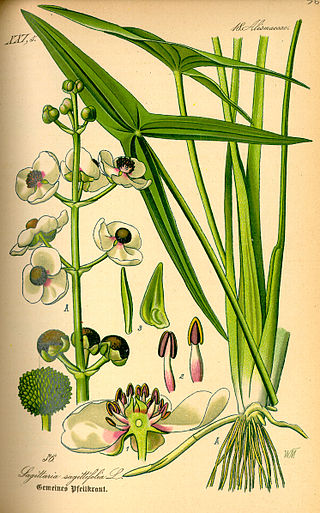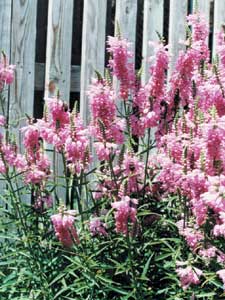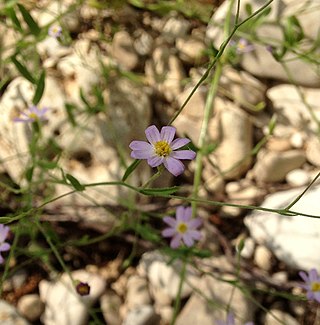
Brazoria County is a county in the U.S. state of Texas. As of the 2020 census, the population of the county was 372,031. The county seat is Angleton.

Gaillardia is a genus of flowering plants in the family Asteraceae, native to North and South America. It was named after Maître Gaillard de Charentonneau, an 18th-century French magistrate who was an enthusiastic botanist. The common name may refer to the resemblance of the inflorescence to the brightly patterned blankets made by Native Americans, or to the ability of wild taxa to blanket the ground with colonies. Many cultivars have been bred for ornamental use.

Monarda is a genus of flowering plants in the mint family, Lamiaceae. The genus is endemic to North America. Common names include bergamot, bee balm, horsemint, and oswego tea, the first being inspired by the fragrance of the leaves, which is reminiscent of bergamot orange. The genus was named for the Spanish botanist Nicolás Monardes, who wrote a book in 1574 describing plants of the New World.

Sagittaria is a genus of about 30 species of aquatic plants whose members go by a variety of common names, including arrowhead, duck potato, swamp potato, tule potato, and wapato. Most are native to South, Central, and North America, but there are also some from Europe, Africa, and Asia.

Warnockia is a genus from the family Lamiaceae, first described in 1996. It contains only one known species, Warnockia scutellarioides, the prairie brazosmint, native to the south-central United States and northern Mexico (Coahuila).

Colubrina is a genus of about 30 species of flowering plants in the family Rhamnaceae, native to warm temperate to tropical regions of Africa, the Americas, southern Asia, northern Australia, and the Indian Ocean islands.

Physostegia, the lionshearts or false dragonheads, is a genus of flowering plants in the family Lamiaceae, native to North America. They are erect rhizomatous herbaceous perennials inhabiting damp, sunny places. They grow up to 2 m (7 ft) tall with purple or pink tubular flowers in racemes in summer.

Houstonia (bluet) is a genus of plants in the family Rubiaceae. Many species were formerly classified, along with other genera since segregated elsewhere, in a more inclusive genus Hedyotis.

Senecio ampullaceus, also known as Texas ragwort, Texas squaw-weed, Texas groundsel, and Texas butterweed, is a species of Senecio in the family Asteraceae, receiving its Latin name ampullaceus from its flask shaped flower-head. It is recommended for landscape use in its native Texas.

Coleus scutellarioides, commonly known as coleus, is a species of flowering plant in the family Lamiaceae, native to southeast Asia through to Australia. Typically growing to 60–75 cm (24–30 in) tall and wide, it is a bushy, woody-based evergreen perennial, widely grown for the highly decorative variegated leaves found in cultivated varieties. Another common name is painted nettle, reflecting its relationship to deadnettles, which are in the same family. The synonyms Coleus blumei, Plectranthus scutellarioides and Solenostemon scutellarioides are also widely used for this species.

Lindheimera is a genus of flowering plants in the tribe Heliantheae within the family Asteraceae found in North America. The genus is named for German-American botanist Ferdinand Lindheimer, 1801–1879.

A prison cemetery is a graveyard reserved for the dead bodies of prisoners. Generally, the remains of inmates who are not claimed by family or friends are interred in prison cemeteries and include convicts executed for capital crimes.

Brazoria truncata, common name rattlesnake flower, is a plant species in the family Lamiaceae, first described in 1834. It is endemic to Texas, found in the south-central and eastern parts of the state.

Chaetopappa bellidifolia , called the Edwards lazy daisy, or whiteray leastdaisy, is a North American species of plants in the family Asteraceae. It has been found only in central Texas, largely in the Edwards Plateau.
Helianthus praecox is a North American species of sunflower known by the common name Texas sunflower. It is endemic to Texas. Most of the populations are either along the Gulf Coast or in the Río Grande Valley.

Gaillardia suavis is a species of flowering plant in the family Asteraceae, common names pincushion daisy and perfumeballs. It is native to northern Mexico and the southern Great Plains of the United States.

Opuntia tortispina is a species of flowering plant in the family Cactaceae, native to the central United States. It was first described in 1856.
Daucosma is a genus of flowering plants belonging to the family Apiaceae.
Geniostemon is a genus of flowering plants belonging to the family Gentianaceae.
Camassia angusta, the prairie camas or prairie hyacinth, is a species of flowering plant in the family Asparagaceae. It is native to the central US; Kansas, Oklahoma, Texas, Iowa, Missouri, Arkansas, Illinois, and Indiana. A bulbous perennial reaching 75 cm (30 in), it blooms in April and May with white, blue, purple, or violet flowers.
















